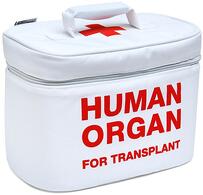A pressing issue in transplantation today is appropriate organ allocation and ensuring that the sickest patients and those who would benefit the most are afforded the gift of life. In order to be listed, all patients require certain specific data points in order to be successfully entered into the national database and deemed active on the waitlist. For some patients, such as those awaiting a lung or liver transplant, organ allocation is driven by scoring systems (the LAS and MELD score respectively) that are a reflection of disease severity.

These scores, in an effort to ensure fairness and objectivity, are comprised of values for discrete variables that are inputted into a formula that calculates the score. Depending upon the MELD score, for example, the transplant center is required to re-qualify the patient at specified time intervals.
For the sickest patients, these laboratory values must be verified every 7 days, and at the time of re-verification, be no more than 48 hours old. Patients with hepatocellular carcinoma may receive exception points to the MELD score based upon tumor size as well as time on the list.
Entering specific data points is right for the patients and right for the objectivity required, but it requires careful data management to not only ensure that the patient is receiving the best opportunity possible to receive a transplant, but also to make sure that the transplant center is in compliance for when their data is audited. These human and compliance components provide intense pressure to be sure this data is available and correct when required.
But what if the sources of information vary? What if some arrive automatically and others need to be gathered and entered? How does a transplant center keep up with this?
While automated input of this data from internal systems is ideal, frequently not all of the data comes from internal sources. Tracking, collecting, and inputting incoming non-interfaced data into the program's database creates a burdensome workload on the transplant center’s staff and represents a typical bottleneck in work flows for most centers, but more importantly, cause great potential for error. In order to avoid this bottleneck and ensure accuracy, transplant centers would be best served by well-defined workflow processes to manage the significant volume of data received from referring physicians and other outside sources.
Unlike interfaced data from internal systems, workflows surrounding this external data tend to be lacking automated ways to be notified of its arrival, automated prioritization based on patient status, and facilitated input in the program’s database. By focusing on automation improvements around these external data sources and advanced data capture tools, transplant centers can not only improve patient outcomes and compliance but also free up critical transplant staff for other functions that require direct patient contact.